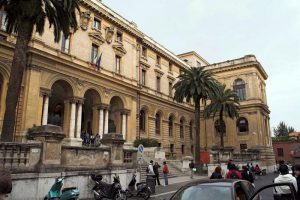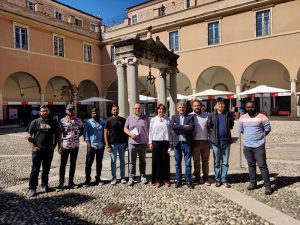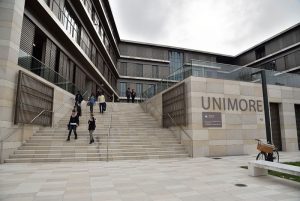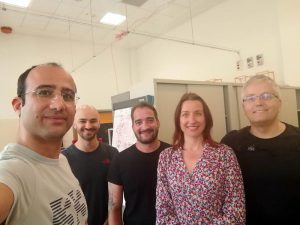Research work at SAPIENZA University of Rome
In 2022, Associate Professor of the Department of Higher Mathematics Tetiana Shmatko was awarded a grant to conduct research at SAPIENZA University of Rome (University of Rome La Sapienza), receiving a 4-month Visiting Professor position at Sapienza for professors in danger due to conflict.
Shmatko T.V. was accepted to the research group of Prof. Lacarbonara, heading the Department of Structural and Geotechnical Engineering, where she performed research work in the field of “Investigation of nonlinear free vibrations of geometrically nonlinear functionally gradient sandwich porous plates of different shapes and boundary conditions using a new approach based on the application of the theory of R-functions and the Ritz variational method”. Shmatko T.V. was also included in the organizing committee of the Third International Conference on Nonlinear Dynamics (NODYCON 2023), which will be held in Rome on June 18-22, 2023.
Collaboration with leading researchers at the University of Modena and Reggio Emilia UNIMORE
In May 2022, Associate Professor Tetiana Shmatko received a grant from the University of Modena and Reggio Emilia UNIMORE, Italy, which is awarded to foreign professors and researchers who are called upon to collaborate with leading members of the University of Modena. Within the framework of this grant, Tetyana Shmatko conducted thematic educational events for master’s and PhD students of this University. She had international cooperation with the scientific group of the Department of Engineering “Enzo Ferrari ” and participated in a practical experiment in the field of “Vibration of plates of complex shape: experimental modal analysis, finite element method and R-function method”.
As part of the research team led by Prof. Pellicano, Shmatko T.V. was engaged in the application of innovative methods and technologies such as additive manufacturing and 3D printers, which are becoming increasingly popular both at the design and production stages. The result of the combination of practical experimentation and analytical approach confirmed the benefit of obtaining affordable, reliable, and versatile methods that allow modeling the behavior of composite structures with complex shapes and different boundary conditions.




